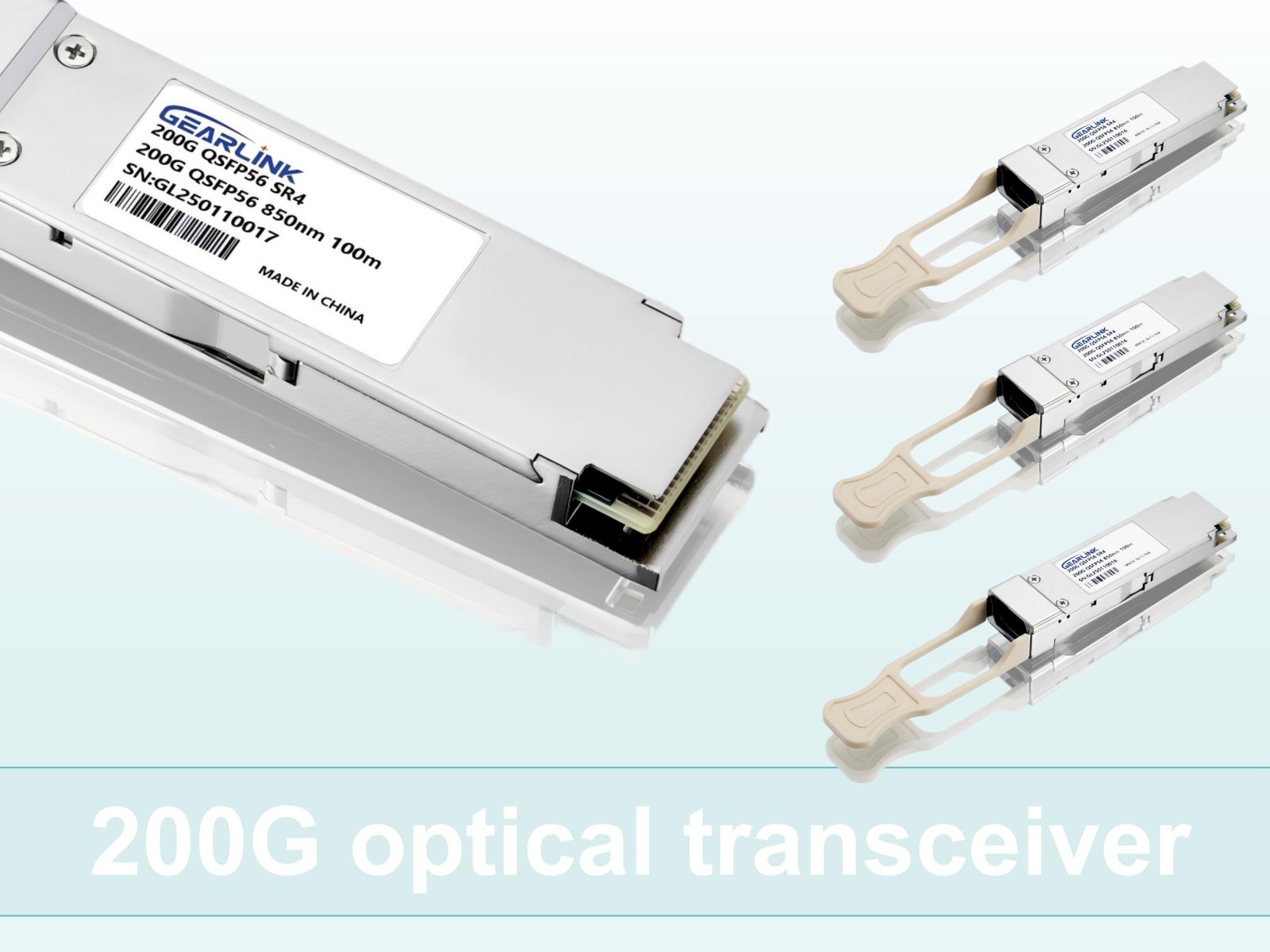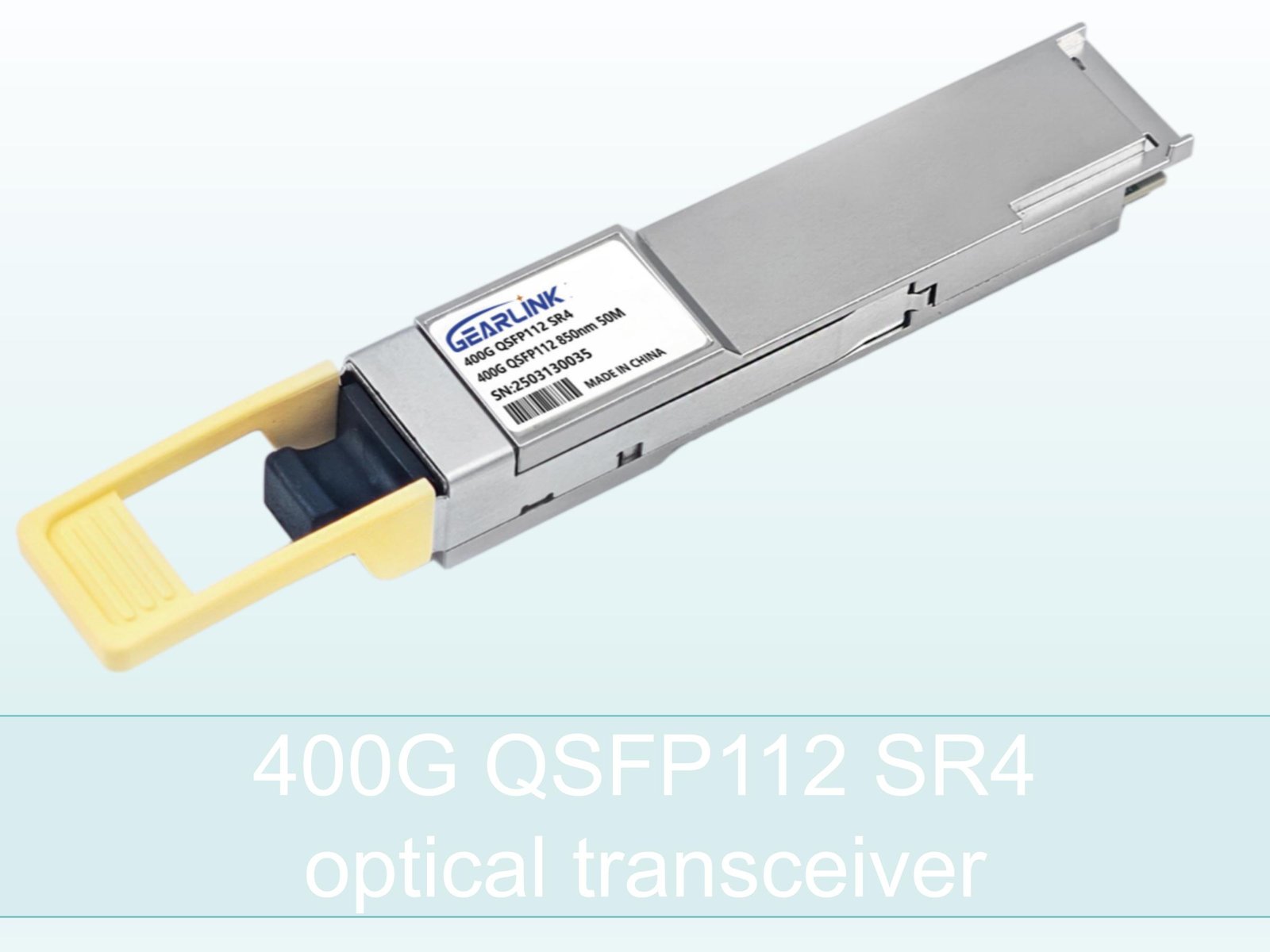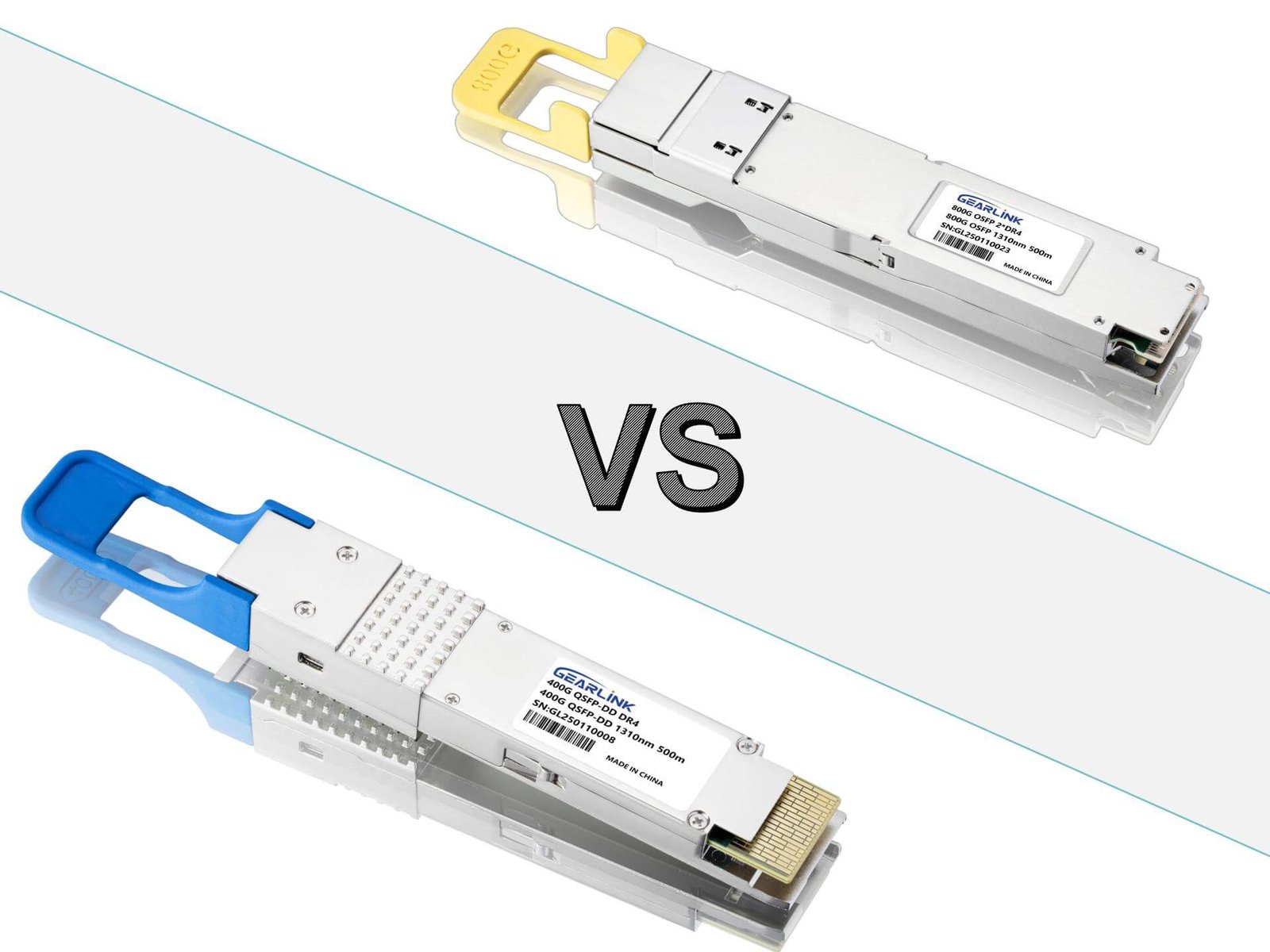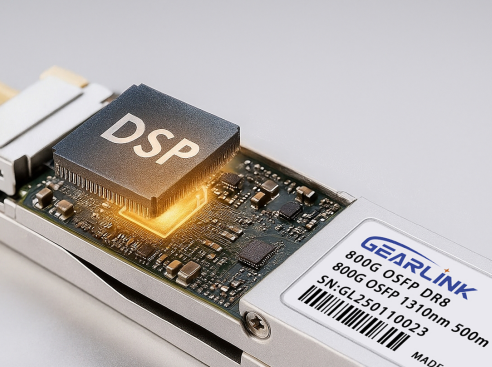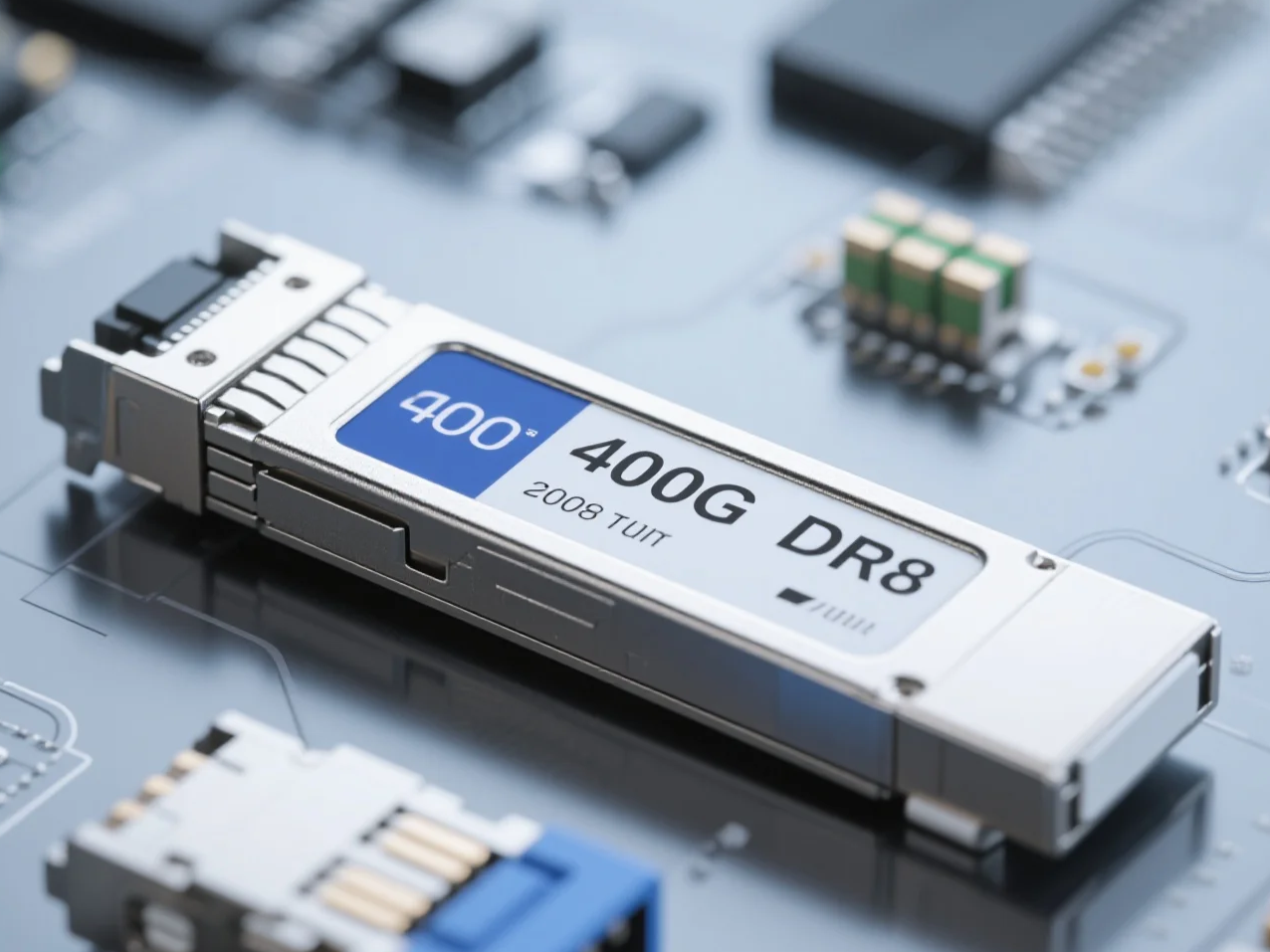Introduction
In today’s rapidly evolving digital world, data centers, telecommunications networks, and cloud infrastructures demand ever-increasing speed and efficiency. To meet these growing needs, the 200G optical transceiver has emerged as a vital technology. Often referred to simply as a 200G transceiver, this device bridges the performance gap between 100G and 400G systems.
The 200G optical transceiver provides an ideal balance between bandwidth, power efficiency, and cost. It delivers twice the capacity of 100G solutions while maintaining compatibility with existing infrastructure. In this comprehensive guide, we will explore its core principles, types, benefits, and deployment strategies — all in simple, easy-to-understand terms.
What Is a 200G Optical Transceiver?
A 200G optical transceiver is a high-speed pluggable module that converts electrical signals into optical signals for data transmission, and vice versa for data reception. It supports data rates up to 200 Gbps, typically achieved using multiple lanes of 25 Gbps or 50 Gbps each.
In simpler terms, a 200G transceiver acts as a bridge that transfers massive volumes of information over optical fibers, enabling faster data exchange between network switches, routers, and servers.
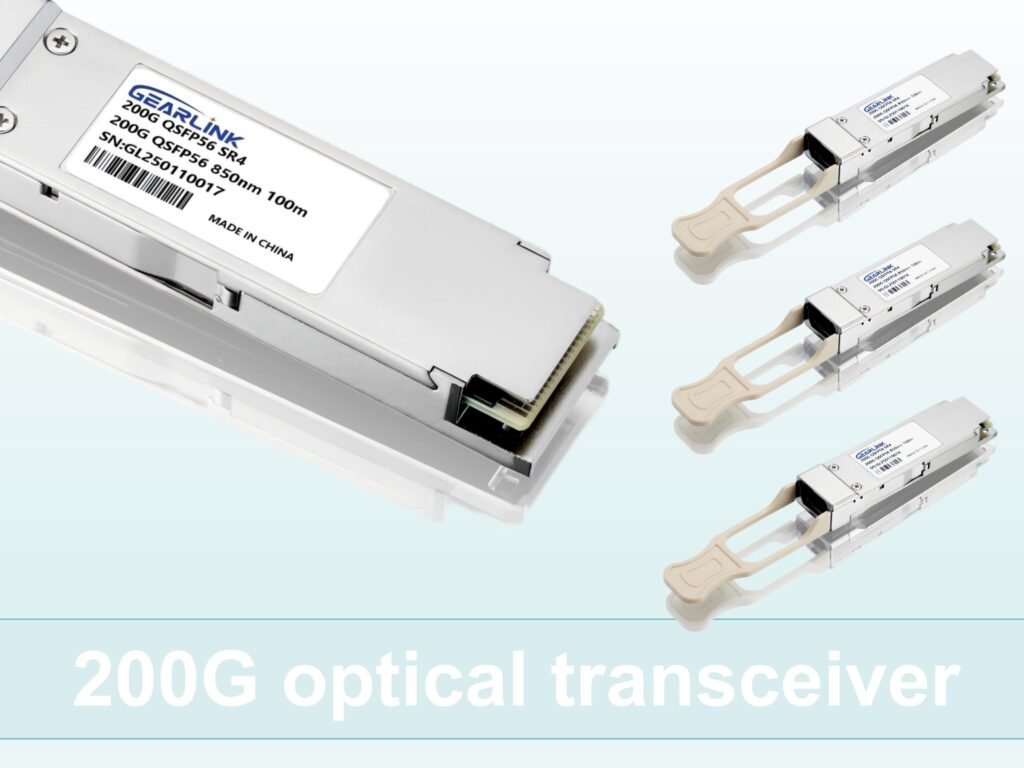
How 200g optical transceiver Works
Electrical input from a device is converted into light signals.
These light pulses travel through optical fibers to another module.
The receiving transceiver converts them back into electrical signals.
This optical-electrical conversion enables high-speed, long-distance communication with minimal signal loss — a cornerstone of modern data infrastructure.
Common Form Factors of 200G Optical Transceivers
Two major form factors dominate the 200G transceiver landscape — QSFP56 and QSFP-DD. Both have their strengths and serve different network needs.
200G QSFP56 Optical Transceiver
The 200G QSFP56 module uses four 50 Gbps lanes based on PAM4 (Pulse Amplitude Modulation) technology. This advanced modulation allows twice the data rate of older NRZ systems using the same number of lanes.
Key characteristics of QSFP56 modules:
| Feature | QSFP56 200G Optical Transceiver |
| Lane configuration | 4 × 50 Gbps PAM4 |
| Typical distance | 100 m to 10 km |
| Connector type | MPO or LC |
| Fiber type | MMF (SR4), SMF (FR4/LR4) |
| Power consumption | ~4–5 W |
| Typical applications | Data centers, enterprise networks |
QSFP56 modules are compact, energy-efficient, and backward-compatible with QSFP28 hardware, making them ideal for smooth upgrades.
200G QSFP-DD Optical Transceiver
The QSFP-DD (Quad Small Form-factor Pluggable Double Density) supports 8 lanes of 25 Gbps each using NRZ modulation. While it consumes slightly more power, it offers higher port density and an easy migration path to 400G or 800G networks.
| Feature | QSFP-DD 200G Optical Transceiver |
| Lane configuration | 8 × 25 Gbps NRZ |
| Typical distance | Up to 10 km |
| Connector type | LC duplex or MPO-16 |
| Backward compatibility | QSFP+, QSFP28, QSFP56 |
| Scalability | Supports upgrade to 400G/800G |
Because QSFP-DD transceivers use the same physical cage as 400G models, they allow flexible network expansion without redesigning hardware.
Technical Principles Behind 200G Optical Transceivers
PAM4 and NRZ Modulation
The main technologies enabling 200G speeds are PAM4 and NRZ.
PAM4 doubles data throughput by encoding two bits per symbol (four signal levels). It’s widely used in QSFP56 modules.
NRZ, simpler and more robust, uses two signal levels for one bit per symbol. It’s typically found in QSFP-DD 200G models.
Although PAM4 offers higher bandwidth efficiency, it requires more complex error correction and signal processing.
Fiber Types and Reach Options
| Transceiver Type | Fiber Type | Connector | Typical Reach |
| 200G SR4 | MMF | MPO-12 | 70–100 m |
| 200G FR4 | SMF | Duplex LC | 2 km |
| 200G LR4 | SMF | Duplex LC | 10 km |
| 200G CWDM4 | SMF | LC | 2–10 km |
Choosing the correct reach ensures optimal performance and avoids unnecessary cost.
Optical Wavelengths
Most 200G optical transceivers operate in the 1310 nm wavelength range for single-mode fiber or 850 nm for multimode fiber. These wavelengths are standardized for minimal attenuation and high signal stability.
Applications of 200G Optical Transceivers
The 200G transceiver is designed to meet multiple networking needs, from short-range interconnects to long-haul data transmission.
1. Data Center Connectivity
Modern data centers rely on 200G optical transceivers to interconnect servers, switches, and storage arrays. They help achieve higher throughput without increasing fiber counts or power usage.
2. Cloud and AI Infrastructure
Cloud platforms and AI clusters generate enormous east-west traffic. Deploying 200G optical transceivers significantly enhances data flow between computing nodes and accelerates distributed workloads.
3. Enterprise Networks
Large organizations benefit from 200G transceivers by achieving faster intra-campus communication and improved business application responsiveness.
4. Telecom and Metro Networks
Telecom operators use coherent or extended-reach 200G modules to transmit data over metropolitan or regional distances while minimizing latency and signal degradation.
Benefits of Using a 200G Optical Transceiver
| Advantage | Description |
| Higher Bandwidth Density | Doubles throughput compared with 100G solutions. |
| Lower Power per Bit | More efficient than running multiple 100G ports. |
| Backward Compatibility | Many modules interoperate with QSFP28 systems. |
| Cost Efficiency | Reduces fiber cabling, transceiver count, and rack space. |
| Scalability | Serves as a natural step toward 400G/800G networks. |
With these benefits, organizations can deploy faster, greener, and more scalable network infrastructures.
Deployment Considerations
Even though 200G optical transceivers simplify upgrades, several best practices should be followed during implementation.
Power and Thermal Design
Ensure your switches or routers have sufficient cooling airflow. Excessive heat can shorten module lifespan or degrade signal quality.
Fiber and Connector Quality
Use clean, low-loss connectors and high-grade fiber optic cables. At 200 Gbps, even small imperfections can lead to performance issues.
Compatibility and Firmware
Confirm that the network device firmware supports the 200G optical transceiver model. Always check MSA compliance before deployment.
Distance and Link Budget
Plan the optical budget based on fiber length and connection count. Avoid exceeding module specifications to prevent packet loss.
Migration Path
A gradual migration from 100G to 200G allows cost optimization and operational stability. Many organizations start with critical backbone links before upgrading the entire fabric.
Future Trends of 200G Optical Transceivers
The networking world continues to evolve rapidly, and 200G optical transceivers are paving the way for next-generation designs.
Key trends include:
Higher per-lane data rates – Development of 100 Gbps-per-lane technology will make 400G and 800G even more efficient.
Photonic integration – Combining optics and electronics on a single chip will lower cost and power consumption.
Smarter monitoring – Advanced telemetry and self-diagnosis will enhance network reliability.
Green networking – Lower power consumption per bit will help organizations meet sustainability goals.
Seamless scalability – QSFP-DD will continue to serve as a flexible form factor for upgrades to 400G and beyond.
FAQs of 200g optical transceiver
1. What is a 200G optical transceiver used for?
It is used to transmit and receive data at 200 Gbps over optical fiber in data centers, telecom networks, and enterprise systems.
2. What’s the difference between a 200G optical transceiver and a 200G transceiver?
They refer to the same device; the term “optical” emphasizes the use of fiber optics instead of copper.
3. How far can a 200G optical transceiver transmit?
Depending on the module type, it can reach from 70 m (SR4) up to 10 km (LR4) or beyond for coherent optics.
4. Is a 200G transceiver compatible with 100G systems?
Yes. Many 200G modules support dual rates or backward compatibility with 100G QSFP28 ports.
5. What are the advantages of upgrading to 200G?
Faster data rates, reduced port count, lower energy cost, and readiness for 400G future expansion.
Conclusion
The 200G optical transceiver represents a major leap forward in network performance and scalability. With form factors like QSFP56 and QSFP-DD, organizations can achieve higher throughput, lower latency, and more efficient power usage — all without major infrastructure changes.
Whether you’re upgrading a data center, deploying a new cloud network, or preparing for 400G evolution, the 200G transceiver offers a balanced, future-proof solution. As technology advances, these modules will remain an essential stepping stone toward the next era of optical communication.
